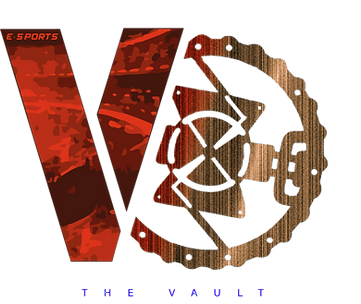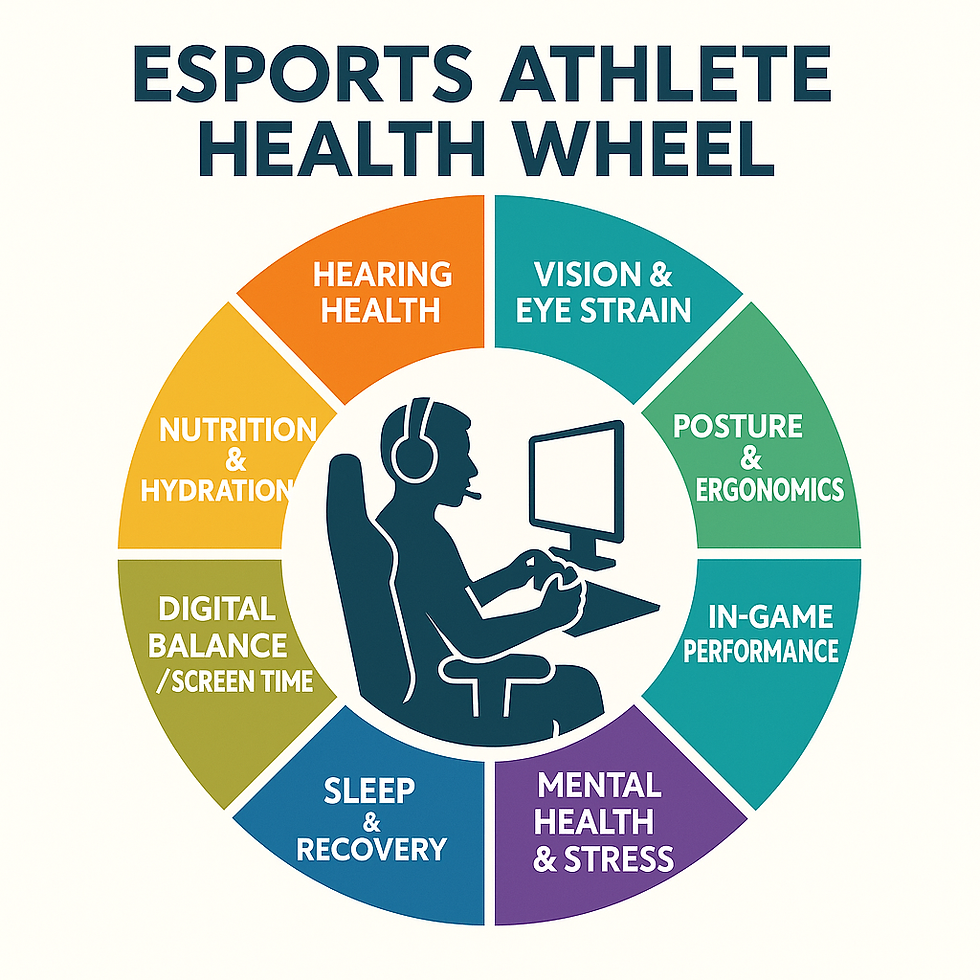The Rising Phenomenon of eSports: Preparing Athletes for Success
- ESPORTS Master

- Jun 24, 2023
- 6 min read
Author's Note: This article is based on a research study published in PubMed Central.

In recent years, electronic sports (eSports) have taken the world by storm, rapidly emerging as a popular form of new media. With the widespread availability of online games and streaming technologies, eSports have gained a massive following and attracted a global audience of nearly half a billion fans. The industry has surpassed the billion-dollar mark and shows no signs of slowing down.
But what exactly is eSports? While a universally accepted definition is still up for debate, eSports can be described as a form of sport where electronic systems facilitate the primary aspects, and human-computer interfaces mediate the input of players and teams. eSports encompass a wide range of game genres, such as multiplayer online battlefield arena (MOBA), first-person shooters (FPS), real-time strategy (RTS), and sports simulations. As the popularity of eSports continues to rise, the discussion about whether it should be considered a physical sport discipline gains momentum. Just like traditional athletes, eAthletes train rigorously, compete in tournaments, and adhere to competition, association, and governing body rules. They face similar mental and physical challenges, including stress, short career spans, and the need for peak performance. In fact, eSports have gained recognition in countries like China and the United States, where eAthletes are considered professional players.
Despite the ongoing debate surrounding its classification, there is no denying that eSports have a significant impact on the health of players. Just like any competitive sport, injuries can occur. The nature of eSports, characterized by prolonged sitting, repetitive movements, screen vision, extended playing hours, and a sedentary lifestyle, poses potential risks to the musculoskeletal, ophthalmology, neurological, and metabolic systems of eAthletes. To shed light on the potential health hazards faced by professional eAthletes and the importance of injury prevention, a research study explored the different injuries prevalent in this sport. The study emphasized the benefits of conducting pre-participation evaluations and implementing proper injury prevention strategies for high-level gamers. The Physical Toll of eSports
Musculoskeletal System
To achieve top performance, eAthletes spend hours engaged in repetitive movements using gamepads, mice, and keyboards while sitting for extended periods. This combination of factors often leads to musculoskeletal complaints and injuries. Neck and back pain are the most common issues reported, but other areas of the body may also be affected. The forward displacement of the head during gameplay can cause abnormalities in the cervical spine and muscles, potentially leading to degeneration, neural compression, and radiculopathies. Hand and wrist pain are also prevalent among eAthletes due to the high number of fine motor movements executed during gameplay. Conditions like carpal or ulnar tunnel syndromes, De Quervain's tendinopathy, and elbow pain are frequently diagnosed. To address these musculoskeletal issues, eAthletes can benefit from exercise therapy, stretching, manual manipulation, and other physical therapies that help reduce muscle tension, improve mobility, and enhance spinal flexion.
Ophthalmology System
eSports demand shigh levels of visual and attentional stamina. However, excessive exposure to computer screens, especially with light-emitting diodes, can have adverse effects on vision and disrupt the natural circadian rhythm. eAthletes often experience eye fatigue, dry eyes, and temporary alterations in visual function. The use of virtual reality headsets in gaming further compounds these issues by affecting the ocular surface, tear film, vergence ability, and accommodative facility. To mitigate the risks associated with prolonged screen time, it is crucial for eAthletes to prioritize their eye health. Taking regular breaks during gaming sessions to rest the eyes, practicing the 20-20-20 rule (looking at an object 20 feet away for 20 seconds every 20 minutes), and using artificial tears or lubricating eye drops can help alleviate eye strain and dryness. Additionally, adjusting monitor settings to reduce glare, optimizing lighting conditions in the gaming environment, and maintaining proper posture can contribute to better visual comfort and reduce the risk of long-term ophthalmic issues.
Neurological System
The intense focus and concentration required in eSports can place significant strain on the neurological system. The fast-paced nature of competitive gaming, combined with high cognitive demands, can lead to mental fatigue, increased stress levels, and psychological burnout. Prolonged exposure to stressful situations and high-pressure competitions may contribute to anxiety, depression, and other mental health challenges. To address these concerns, it is essential for eAthletes to incorporate mental wellness practices into their training routines. Techniques such as mindfulness meditation, relaxation exercises, and regular breaks can help alleviate mental stress and enhance overall well-being. Additionally, seeking support from mental health professionals and building strong support networks within the eSports community can be valuable resources for eAthletes.
Metabolic System
The sedentary nature of eSports and prolonged sitting can have negative effects on the metabolic system. Lack of physical activity and unhealthy dietary habits can lead to weight gain, increased risk of obesity, and metabolic disorders such as diabetes and cardiovascular diseases. Furthermore, irregular sleep patterns due to late-night gaming sessions can disrupt the circadian rhythm and negatively impact metabolic health. To promote a healthy metabolic profile, eAthletes should prioritize physical fitness and adopt an active lifestyle outside of gaming. Incorporating regular exercise, such as cardiovascular workouts, strength training, and flexibility exercises, can help counteract the sedentary nature of eSports. Additionally, maintaining a balanced and nutritious diet, staying hydrated, and getting sufficient sleep are crucial for optimal metabolic function and overall well-being.
Injury Prevention Strategies for eAthletes
To mitigate the potential risks associated with eSports, injury prevention strategies should be implemented as an integral part of training and competition. Here are some key measures that eAthletes can consider:
Pre-participation evaluations: Conducting thorough medical screenings before entering professional eSports can help identify pre-existing conditions, assess physical fitness, and establish baseline health data. This information can guide personalized training programs and preventive interventions.
Ergonomic optimization: Ensuring proper ergonomic setup for gaming stations is essential. This includes maintaining correct posture, using ergonomic chairs and equipment, positioning monitors at eye level, and providing adequate wrist and arm support during gameplay.
Regular breaks and physical activity: Encouraging eAthletes to take frequent breaks during gaming sessions can help reduce the risk of musculoskeletal injuries and alleviate visual fatigue. Engaging in regular physical activity outside of gaming, such as stretching exercises, strength training, and cardiovascular workouts, can improve overall fitness and minimize the negative effects of a sedentary lifestyle.
Visual hygiene practices: Implementing good visual hygiene habits can safeguard eye health. This includes adhering to the 20-20-20 rule, adjusting screen brightness and contrast settings, using blue light filters, maintaining proper distance from the screen, and seeking regular eye exams.
Mental well-being support: Prioritizing mental health and well-being is crucial. Providing access to mental health resources, promoting work-life balance, encouraging social connections within the eSports community, and fostering a supportive environment can help prevent psychological burnout and enhance overall performance.
Educational programs: Raising awareness about the potential risks and preventive measures in eSports is vital for all stakeholders, including eAthletes, coaches, and organizations. Implementing educational programs that focus on ergonomics, injury prevention, healthy lifestyle choices, and mental well-being can empower eAthletes to make informed decisions about their health and develop sustainable practices for long-term success.
Collaboration with healthcare professionals: Establishing partnerships with healthcare professionals, including sports medicine physicians, physiotherapists, nutritionists, and mental health experts, can provide specialized support to eAthletes. These professionals can offer personalized advice, injury rehabilitation, dietary guidance, and mental health counseling tailored to the unique demands of eSports.
Regulation and governance: As eSports continue to grow in popularity, establishing standardized regulations and governance structures becomes increasingly important. Developing guidelines for player health and safety, including injury prevention protocols, rest periods, and mandatory health screenings, can ensure the well-being of eAthletes and promote the sustainable growth of the industry.
Long-term career planning: Recognizing that the career span of eAthletes can be relatively short, it is crucial to prioritize long-term career planning and post-competitive transition support. Offering educational and vocational resources, financial planning guidance, and opportunities for skill development beyond gaming can help eAthletes navigate their careers and thrive beyond their time in the competitive eSports scene.
By proactively addressing the physical, visual, neurological, and metabolic challenges associated with eSports, athletes and organizations can create an environment that supports the well-being and performance of eAthletes. The integration of injury prevention strategies, health education, and holistic support systems will contribute to the sustainability and longevity of the eSports industry, ensuring that eAthletes can thrive in their chosen profession.
In conclusion, eSports have become a global phenomenon, captivating audiences and providing opportunities for talented gamers to excel on an international stage. However, with the rise in popularity, it is essential to acknowledge and address the potential health risks faced by eAthletes. By implementing comprehensive injury prevention strategies, promoting physical and mental well-being, and fostering a culture of long-term career planning, the eSports industry can create a sustainable and supportive environment for athletes to thrive. As the eSports landscape continues to evolve, prioritizing the health and success of eAthletes will be crucial in shaping the future of this exciting and rapidly expanding field.
©2023 Dr. Brian James
About Author: Dr. Brian James is an eSports hearing loss expert and serves the eSports community with expert subject matter and education



